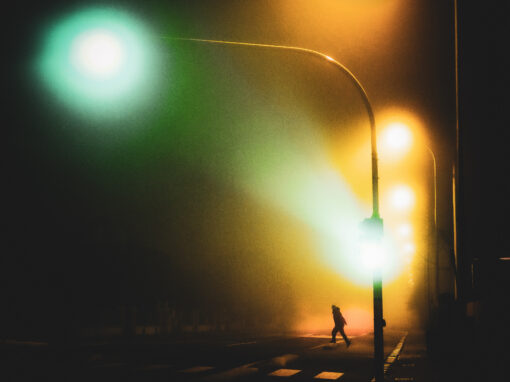Children of a Dinka cattle camp, Bor, South Sudan.
The cattle camps, seldom visited by outsiders, are quite simply incredible. I saw Sebastiao Salgado’s photos of these camps years ago and there was little change that I could see. The Dinka are friendly and enjoy being photographed. The dust and smoke intermingle to create an inimitable atmosphere. We arrived in the late afternoon when the light was soft and warm with long shadows. The tribe has all their wealth in their cattle and there are thousands of them. When young men of the tribe get married the dowry may be as much as 40 cattle. They cover themselves in the ash from their fires to protect against insects.
At night they sleep with their cattle to protect them and they carry Kalashnikovs to do so. Cattle rustling is commonplace and is a cause of conflict. The Ankole Watusi cattle have the largest horns (perhaps a metre long in some cases) I have ever seen and the biggest of the cattle may be worth $500.
During the day the cattle disperse from the banks of the Nile into the long grasses of the alluvial floodplain. They return at dusk instinctively. Shooting at dawn and dusk is perfect as all the cattle are in place. The more you see, the more you realise that there is an inextricable bond between the tribe and their cattle. The way they lead them, rub ash into their skins, attend to their needs, use their milk, dung and urine. It is a symbiotic relationship where there is an understanding of the cattle which goes beyond normal animal husbandry. They take pride in their animals and the whole community of man and beast is interconnected. I have never seen anything like it.
On the previous evening the air was filled with smoke from the dung and kindle wood fires to keep insects at bay. The dust is used to help dry the dung which is laboriously collected and piled in the mornings. It is then dried as fuel. They also cover themselves in ash for the same reason which gives them a ghostly appearance as they walk between their animals. As the sun sets, in African style, the light, smoke and dust create an ethereal atmosphere which makes it appear that the Mundari and their cattle fade into a mist. An ancient mist, trapped in time, where tribal traits and traditions are perpetuated in the twenty first century.
What do you think are the TWO most impactful features that make your image a good photograph? Don’t be shy!
The fading created by smoke and ash in the atmosphere and the tonal contrasts created by the monochrome.
If you would be able to make this photo once again, what would be the ONE thing you would like to do better or different?
I was genuinely very happy with the image but I guess an extra figure in the background to add another element in a working cattle camp.
Trevor Cole shared his photograph in the FRAMES Facebook Group.
Photographer
Trevor Cole, UK
WEBSITE 1
WEBSITE 2
1X
INSTAGRAM
PHOTOCROWD
Equipment and Settings
Nikon D850 + Nikkor 70-200mm f/2.8
1/1250 sec., f/5.6, 130mm, ISO 500





Bharat
August 9, 2020 at 22:21
This is an amazing shot. The dust and the smoke give so much atmosphere to the rugged nature of the place. Having lived in neighbouring Uganda for may years I have seen the Ankole cattle. I hope to visit S Sudan sometime after the pandemic is over.